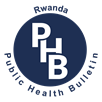
|
Rwanda Public Health Bulletin
Rwanda Public Health Bulletin
ISSN: 2663-4643
EISSN: 2663-4643
Vol. 1, No. 1, 2019, pp. 15-19
|
 Bioline Code: rp19004
Bioline Code: rp19004
Full paper language: English
Document type: Research Article
Document available free of charge
|
|
|
Rwanda Public Health Bulletin, Vol. 1, No. 1, 2019, pp. 15-19
| en |
Factors associated with preventable hypoxic ischemic encephalopathy in term neonates at Kacyiru hospital, Rwanda - a retrospective study
Ishimwe, S. Marie Consolatrice; Humuza, James; Kayitesi, P. Diane; Nkubito, Pascal; Niragire, Philomene & Nyamwasa, Daniel
Abstract
Introduction: Hypoxic-ischemic encephalopathy (HIE) is a type of brain injury that occurs when the
brain doesn’t receive enough oxygen or blood flow occurring during pregnancy, labor and delivery or in
the postnatal period. This study aimed at determining factors associated with preventable HIE at Kacyiru
Hospital in Rwanda.
Methods: This is a case control study using quantitative analysis of data from patients records of all
neonates admitted into the neonatology ward for HIE and their respective mothers from 1st January 2016
to 31st March 2018.
Results: This study showed that APGAR scores less than 7 at 1, 5 and 10 min were found in cases 79.9%,
88.8% and 100% respectively. Convulsions were mostly observed in cases (94.6%) while sucking reflex
ability was more detected in controls (93.8%). The presence of Moro reflexes was also different in cases
and controls, 18.1 % and 81.9% respectively. Women with stained amniotic fluids were 6 times more likely
to have babies with HIE. Women presenting abnormal fetal heart tracings on CTG during labor were 18
times more likely to have babies with HIE and women who attended 0 to 2 ANC visits were 2 times more
at risk of delivering babies with HIE.
Conclusion: Preventable HIE in term neonates at Kacyiru Hospital was likely to be associated with
meconium-stained amniotic fluid, abnormal fetal heart tracing, inappropriate ANC and male gender. Since
HIE treatment is only limited to supportive care with no curative treatements, its prevention and case
reduction is crucial.
|
| |
© Copyright 2019 - The Author(s)
Alternative site location: https://www.rwandapublichealthbulletin.org
|
|
